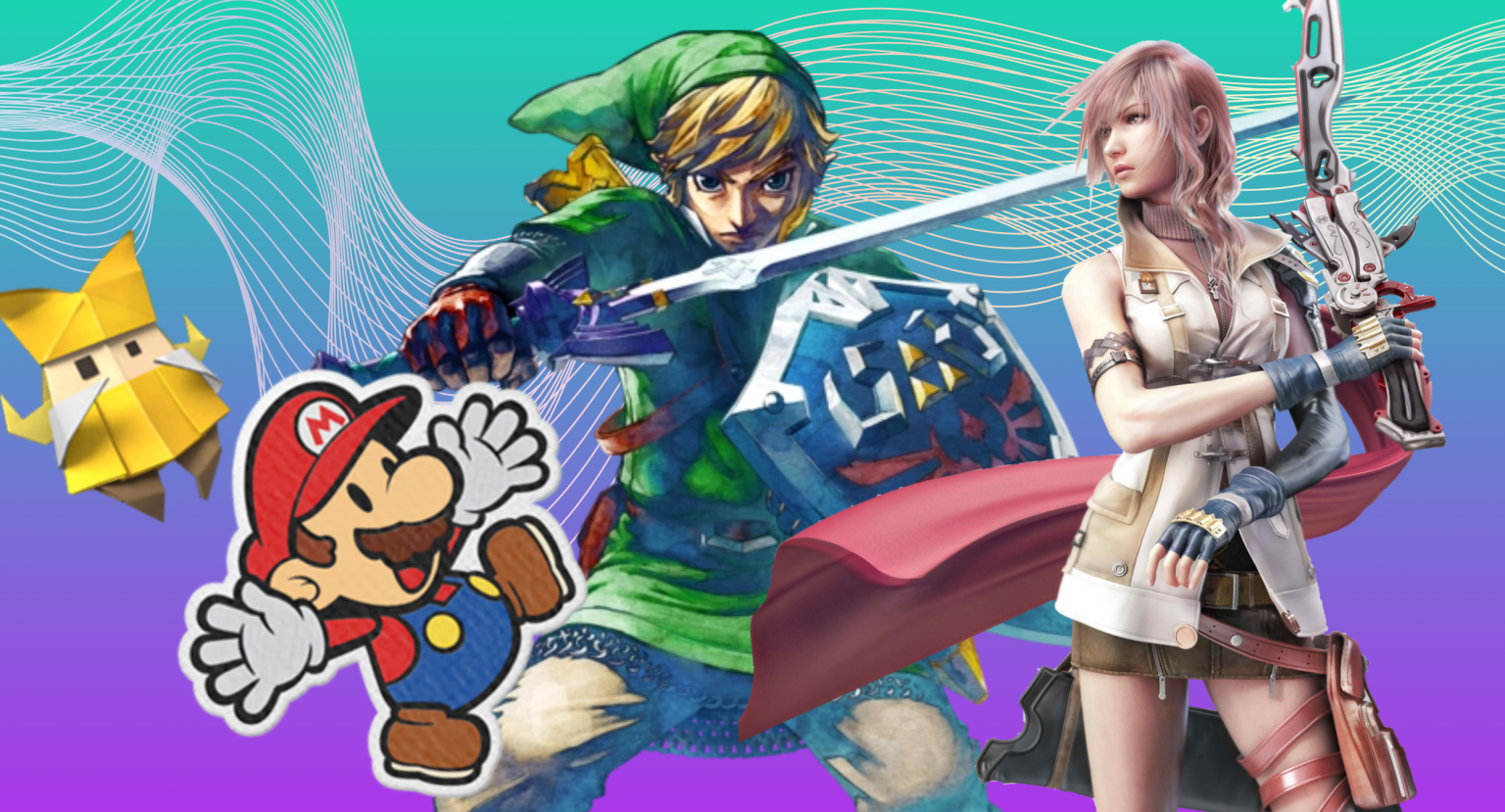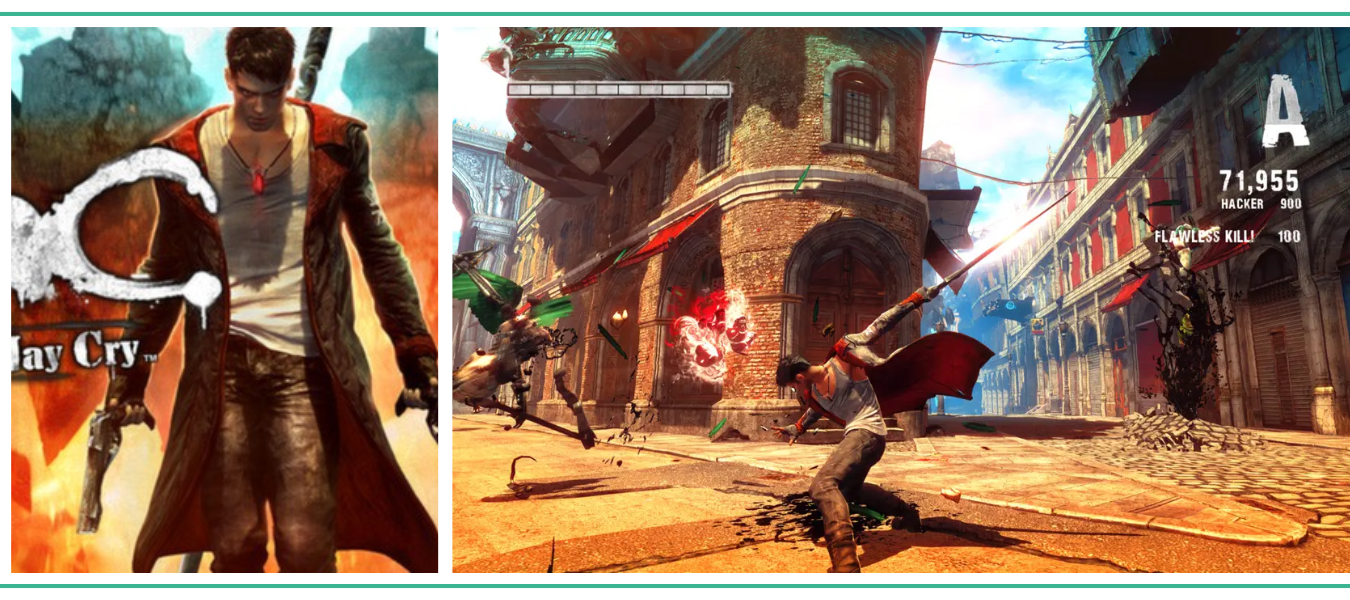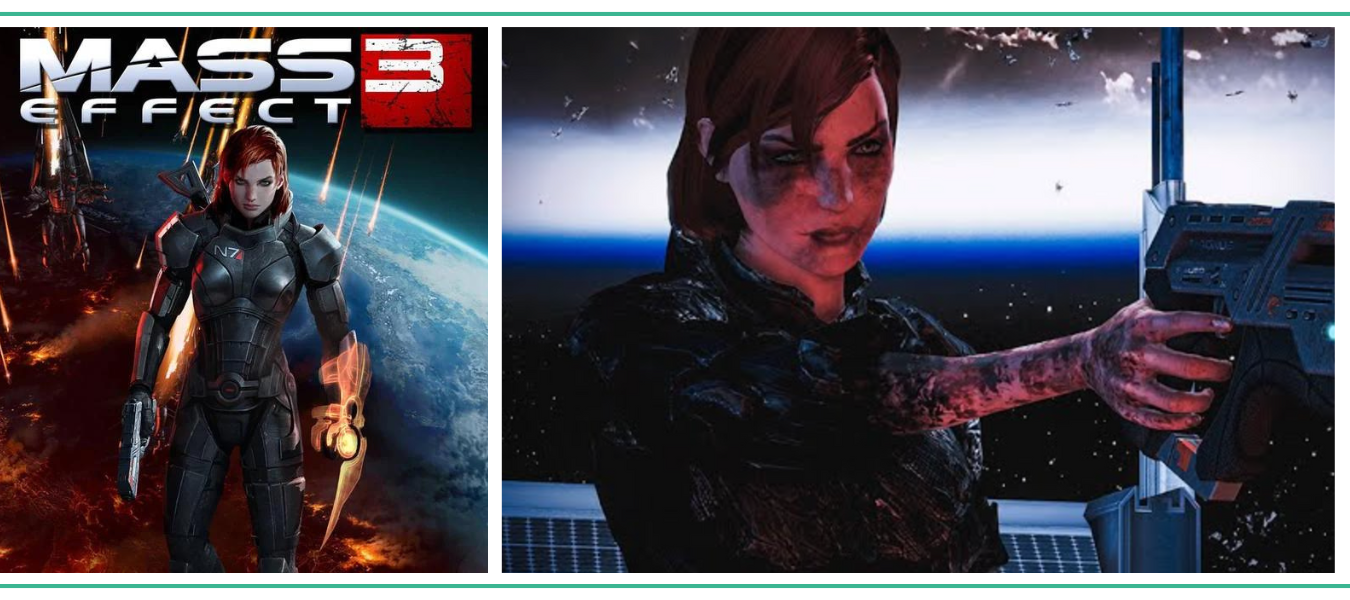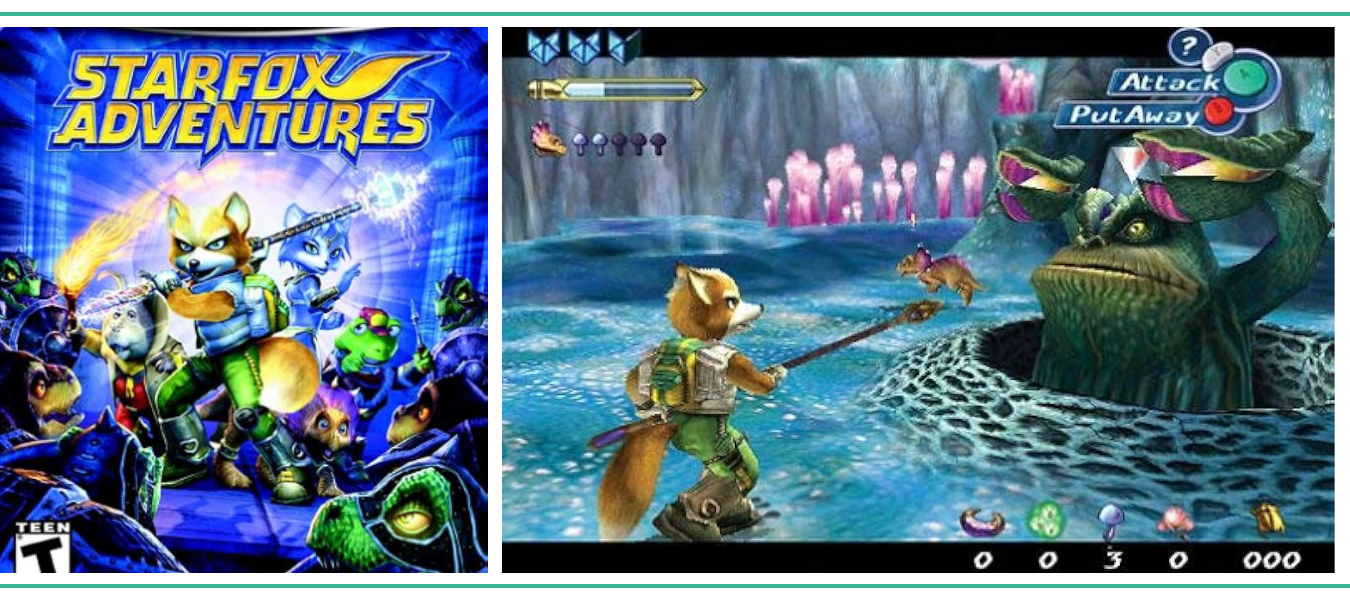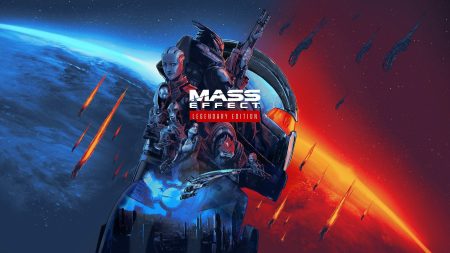Ask 10 different gamers to list their 10 favorite games, and you’ll likely see a number of big franchises represented: The Legend of Zelda, Super Mario, Halo, Final Fantasy, etc. Series like these have helped define the medium across decades, with some recent releases still maintaining a vise-grip on gaming discourse even in a sea of new challengers.
That said, not every entry in these beloved franchises is widely beloved. Sometimes, you’ll get a game from your favorite series that didn’t live up to the hype, tried too many kooky new ideas, or failed to innovate in meaningful ways.
For this edition of Punished Favorites, we’ve decided to highlight some of these polarizing entries in beloved franchises and explain why we still love them, warts and all.
– Sam Martinelli, Editor
9 Polarizing Games That Are Worth a Look
The following games are listed in alphabetical order.
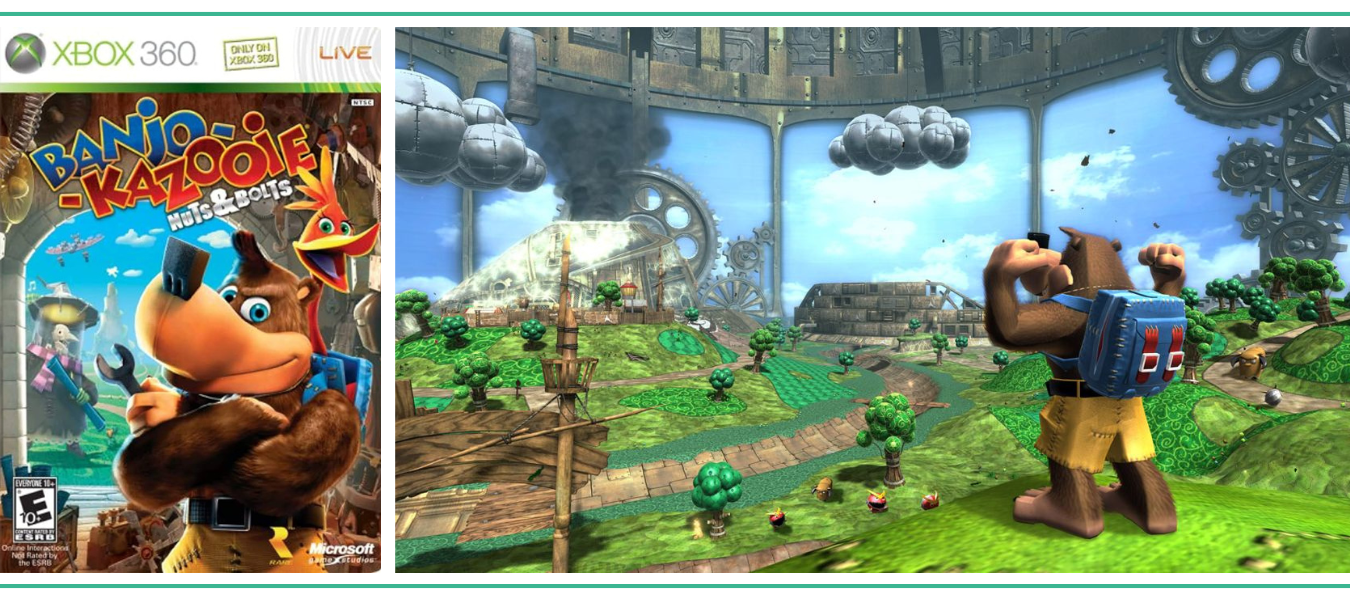
Banjo Kazooie: Nuts & Bolts
Unlike many fans with strong feelings of nostalgia, my initial experience with Banjo-Kazooie wasn’t particularly exciting. The blocky whimsical worlds and quirky characters failed to hook me, and I quickly found myself gravitating toward crass humor in Rare’s Conker’s Bad Fur Day instead. However, when Banjo Kazooie: Nuts & Bolts arrived, it immediately caught my interest.
When I dove into Nuts & Bolts, I was immediately drawn to its vibrant, patchwork-like landscapes. The game’s large, colorful open worlds oozed charm, inviting exploration and experimentation. What truly impressed me was how seamlessly the core gameplay mechanics of the original series were integrated and refined. Platforming remained an important element, but the introduction of customizable vehicles added a fresh layer of depth and creativity. Crafting the perfect vehicle became a delightful obsession, as I strived to engineer the ultimate vehicle to tackle each challenge.
The game’s vehicle design offered endless possibilities for innovation. From cars with retractable wings to flying, blocky contraptions armed with devastating lasers, the game encouraged players to unleash their creativity. And let’s not forget the humor—Nuts & Bolts was brimming with wit and charm, boasting a lovable cast of characters that never failed to bring a smile to my face.
The game had me hooked from its first mission, which whipped Banjo and Kazooie back into shape after years of retirement. It was a clever nod to the characters’ history and an excellent way to kickstart the adventure. As I progressed through the game, I found myself captivated by its epic boss battles and exhilarating races, each one showcasing the game’s innovative vehicle mechanics. I never tired of the side missions as I tried to improve my vehicle designs with every upgrade.
While I didn’t have the opportunity to delve into the game’s online modes at the time, the single-player experience offered more than enough content to keep me engaged. By the time I reached the end credits, I was inspired to return to the earlier games in the series. I ended up developing an appreciation for the Banjo-Kazooie series as a whole, but it all started with my experience with Nuts & Bolts.
Platform: Xbox 360
– Written by Donovan Harrell
DMC: Devil May Cry
When DMC: Devil May Cry was announced in 2010, the outcry was intense. With a redesigned Dante, and Ninja Theory taking the development reins, long-time Devil May Cry fans were worried that they would lose all the things they loved about the series. After all, if Dante wasn’t a chain-smoking, sarcastic, vaguely misogynistic badass, how could it possibly be a good game?
The answer, naturally, was by just being an absolute blast to play. DMC still holds up today, with some of the tightest and most fun hack-and-slash gameplay you can get your hands on. The reimaging of Dante as a jaded, young 20-something is fun, even if he can be a bit of a pill. Sure, the dialogue is deeply rooted in the 2010s and some of the narrative beats exist for shock value more than story payoff, but what other game lets you beat down a virtual version of Bill O’Reilly?
I loved DMC on release, and still feel it is a worthwhile play today. The combo system is deep and engaging, the story feels even more relevant to modern society than it did in 2013, and the addition of different weapon types helps set the combat apart from many of its contemporaries. While the public vitriol turned many against the game simply because it wasn’t like the games of the past, I highly encourage anyone who is a fan of sharp action gameplay to check it out.
Is it the best Devil May Cry? Thanks to the release of Devil May Cry 5, maybe not, but that doesn’t mean it isn’t a joy to play.
Platforms: Xbox 360, Xbox One, PlayStation 3, PlayStation 4, PC
– Written by Gary Wilson
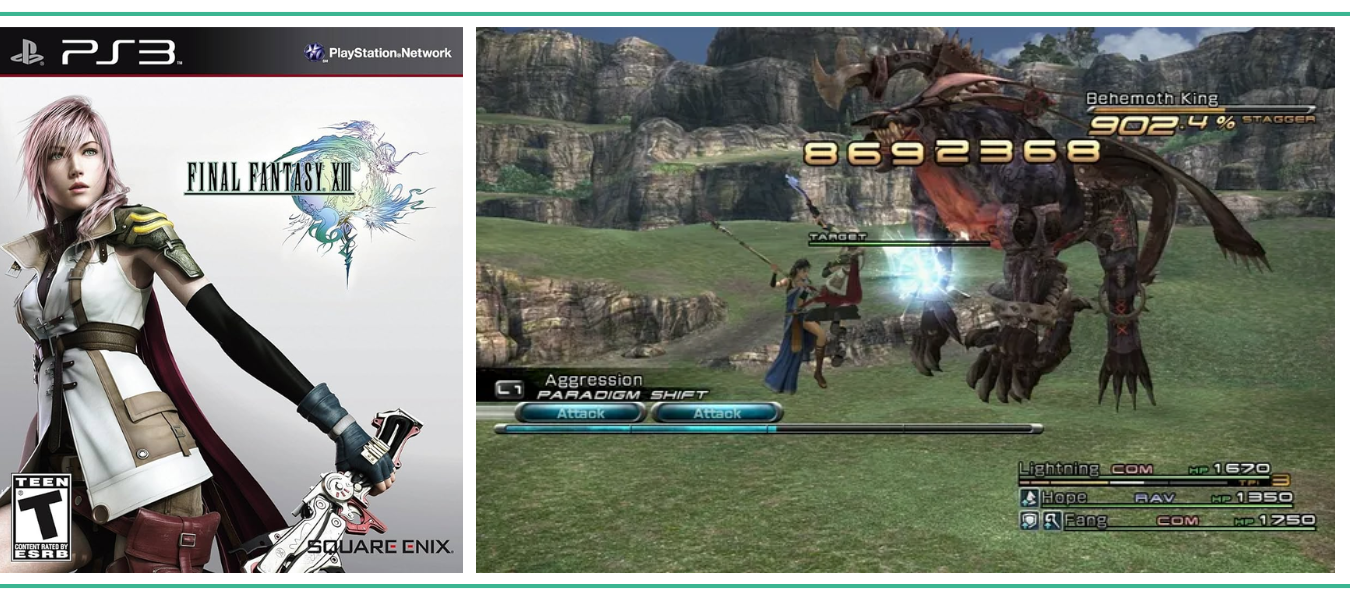
Final Fantasy XIII
Final Fantasy XIII is often considered the beginning of the nadir of Final Fantasy for many, the starting point in a three-game mainline run that was received noticeably more poorly than its predecessors. XIII isn’t an awful game by any means, hovering at a low 80s on aggregate review sites, but something about it obviously struck a nerve with the fandom at large. Its linearity became a huge talking point, but that was just the poster child for an overarching feeling that the series had lost its way—an idea that germinated with Final Fantasy XII (though that game still reviewed well) and culminated in XIII.
In a gameplay sense, I genuinely think there’s a lot to enjoy in XIII. I won’t deny the battle system takes some time to get interesting, but once you get rolling, it feels action-packed—a shot in the arm compared to the old ATB systems of yore. In particular, the game introduces the Stagger mechanic, which has been heavily incorporated within the VII Re-trilogy of games, as well as in XVI. The linearity does exist, but in an era where “open world bloat” is a common complaint, its straightforwardness for large portions of the game almost feels welcome, with a lack of objective-based FOMO that plagues many modern games.
Still, large portions of the complaints toward this title later crystallized, I think, into something more ephemeral, with the game being representative of Final Fantasy “losing its way.” Players bemoaned that the developers had lost touch with their youth—something Final Fantasy, and to an extent JRPGs as a whole, tends to embody.
I don’t think this take is wrong at all. I do think, though, that this is exactly what I find fascinating and interesting about Final Fantasy XIII. In retrospect, the linearity itself isn’t the problem; it’s the squeezing of the story into what feels like tightness instead of brevity. You don’t get to walk into a town and get these silly interactions with well-meaning townsfolk, and you don’t get mini-games. The government hunts you down in Final Fantasy VII too, but paces it with campiness and fun.
In many ways, the beats that hit in XIII are beats that feel distinctly adult. Sazh’s moments with his son, Vanille and Fang’s moments realizing that their world is gone, etc. Snow and Serah’s youthful romance never hits the right notes, but Lightning finally recognizing Snow’s merits does (in one of the truly most beautiful CGI cutscenes I’ve ever seen, even to this day).
Final Fantasy XIII isn’t a perfect game, but it was a necessary one for Square Enix to evolve—and rediscover what Final Fantasy could be in the future.
Platforms: PlayStation 3, Xbox 360, PC
– Written by Kei Isobe
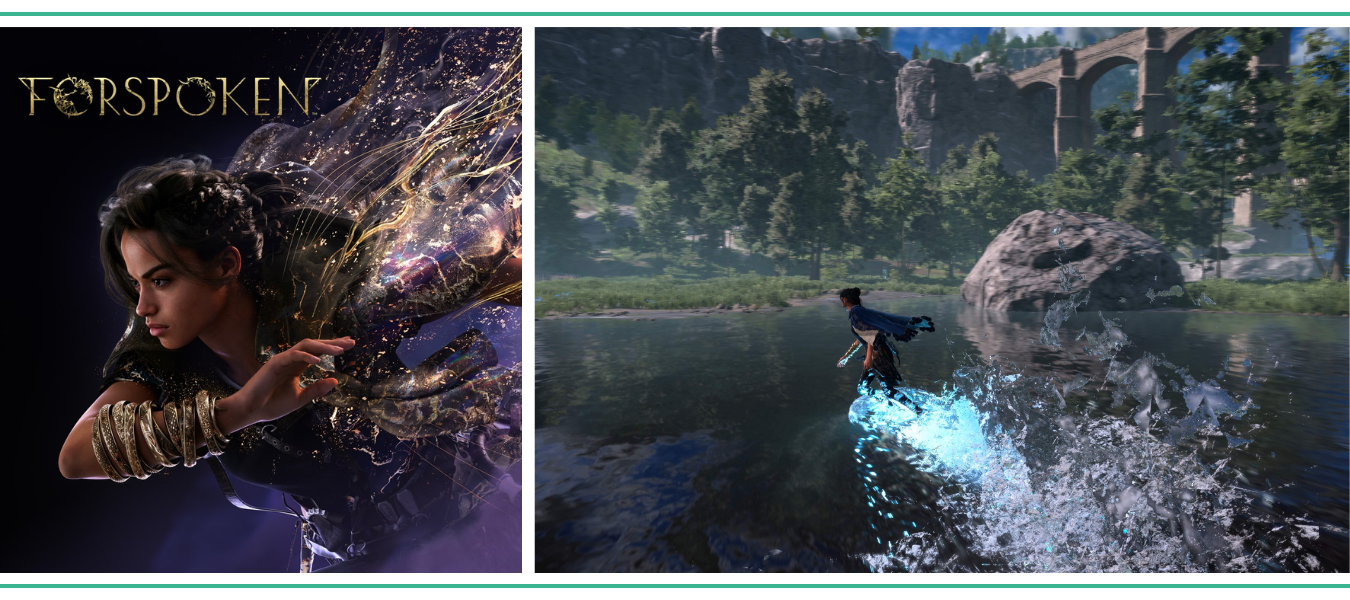
Forspoken
Amid rising AAA prices, Forspoken reminded me how Square Enix occasionally experiments with Final Fantasy spin-offs. I love (most of) the mainline Final Fantasy titles, but I grew up playing Final Fantasy Tactics, Crystal Chronicles, and Dissidia. One of my favorite Final Fantasies of recent memory is Stranger of Paradise for its playful approach to the narrative structure and tropes of the franchise.
Released in January 2023, Forspoken is a Final Fantasy spin-off in all but name. It isn’t perfect, but it takes certain risks while carefully building on some of the most interesting parts of Final Fantasy XV.
Alfre “Frey” Holland flows across the world of Athia, trading swords for magic. As Frey’s magic powers advance, players feel more like a superhero within the world of Athia. When it all comes together, her magic pairs beautifully with her flowing movement. The parkour of Forspoken is smooth and intuitive, and though the open world leaves a little to be desired, I never grew bored traversing it.
Her movement feels like an evolution of Noctis’s motion from Final Fantasy XV. This similarity isn’t an accident; the games share the same studio, Luminous Productions, as well as the same engine. In fact, Luminous only made these two games before being shuttered by Square Enix.
In an alternate universe, Forspoken could have been Final Fantasy XV-2. Frey could have found herself transported from New York to Eos, dancing across those same landscapes that Noctis and his bros saw during their road trip. Would we have celebrated this crossover like Final Fantasy XIII-2? Or still had a more mixed reception, a la Final Fantasy X-2?
We’ll unfortunately never know.
Platforms: PlayStation 5, PC
– Written by Clint Morrison, Jr.

The Legend of Zelda: Skyward Sword
I’ve written extensively about Skyward Sword for this site, but it bears repeating: The 2011 Wii game is, in no uncertain terms, the worst great game ever made. Almost every major positive comes with a glaring negative, and vice versa. The game’s astonishingly well-crafted set of dungeons is littered with explanations of how to do all the puzzles. The motion-based mechanics can be finicky and frustrating, though also make for some of the most engaging combat encounters in the entire franchise. The title’s narrative components in many ways mark the peak of the whole series, yet the pacing is excruciatingly linear as a result.
The game, canonically the first in the vaunted Legend of Zelda franchise, has its fair share of critics (and, in some cases, flat-out haters). None of their criticisms are wrong, necessarily—Skyward Sword is incredibly easy, has the most annoying companion (Fi just won’t shut up!), and didn’t meaningfully break away enough from the longstanding Zelda formula. In an era where popular games were getting more cinematic and more challenging, Skyward Sword went the other way, opting instead to broadly rest on the series’ laurels while presenting a number of controversial alterations (more linearity, more puzzle-based gameplay, more motion controls).
Still, what Skyward Sword does well, it does EXCEPTIONALLY well. The game’s story and character interactions are particularly heartwarming and moving. Some of its dungeons are among the best in the entire series. The motion controls, while unnecessary and wonky in many areas, provide some of the most immersive battles in any game I’ve played. Its impressionist art direction is a constant wonder to look at. (It’s also worth noting that the HD version on Switch mitigates some of the core complaints, allowing the game’s stronger features to shine even brighter.)
Most importantly, though, Skyward Sword feels like a game that cares about people and their everyday lives. It cares about the smaller heroic acts, like helping someone clean their house, just as much as averting cataclysmic events. Most of all, it cares about the relationships people build over time. There are many Zelda games better than Skyward Sword, but few that underscore the importance of caring quite as much.
Platforms: Nintendo Wii, Nintendo Switch
– Written by Sam Martinelli
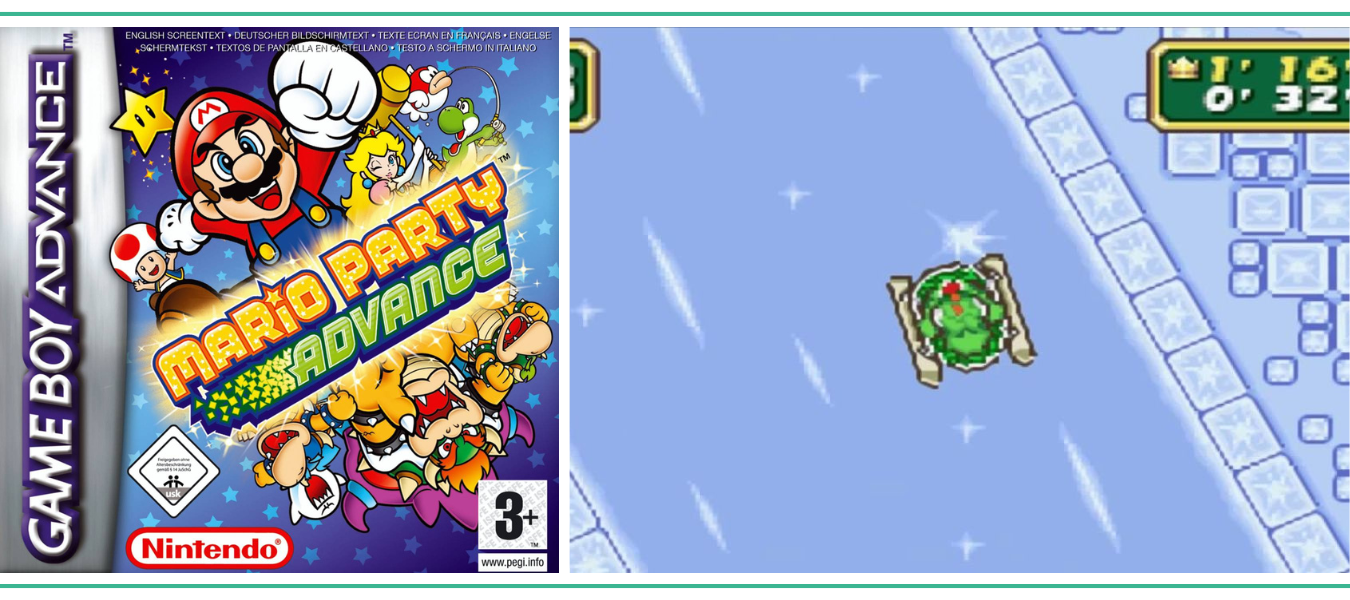
Mario Party Advance
When asked to name your favorite Mario Party game throughout the years, you might say Mario Party 2 or 3 on the Nintendo 64, or even Mario Party Superstars on the Nintendo Switch due to the immense popularity of each of those titles. While that may seem like the normal response, as someone with a deep love of Nintendo handhelds of the early 2000s, I’m going with Mario Party Advance as my favorite Mario Party, especially since I truly believe it has some of the best mini-games of all time. As a bonus, it also features the iconic Professor E. Gadd, which was my first introduction to the legendary Luigi’s Mansion character.
Released in 2005, this is a game I have played fairly regularly for about 15 years, so it’s a special one to me. In Mario Party Advance, you can play through Shroom City, a board game-like adventure filled with secrets and quests. You can also just play mini-games, compete with friends, or earn coins in different challenges. Those mini-games in particular are my favorite parts of Mario Party Advance—as well as where I’ve spent the most time. Among the best are Melon Folly, Koopa Krunch, Drop ‘Em, and Cloud Climb. While there’s nothing inherently special or innovative about them, they bring a certain charm that hasn’t been matched in years (and have rockin’ background music).
Overall, I think Mario Party Advance is the best game in the whole series, even if it’s far from the most popular. While I wouldn’t say the entire game needs to be remade, having some of the best mini-games remastered in the next Mario Party entry would be incredible.
Platform: Game Boy Advance
– Written by Allison McDaniel
Mass Effect 3
All stories must end. And for a series as epic and grand in scope as Mass Effect, there’s only one way it could’ve ended. Unlike in Mass Effect 2’s suicide run, there’s no chance that everyone could make it out of this story alive.
Mass Effect 3 opens with epic destruction on Earth, a planet we’ve never before seen in the series. The game telegraphs to the player, immediately, that not only is a change gonna come, but it’s already here.
I first played the Mass Effect series without knowing all the vitriol about the third game. Players hated the original ending, which is fair, but the degree of the uproar was kind of nuts. It marked a significant and somewhat disturbing change in the meta of dev response to players. Although BioWare added additional scenes that were needed and appreciated, the core of the ending remained the same. And in my opinion (and others’ opinions!), that was more than fine.
Mass Effect, as a series, had to end. From the beginning, Commander Shepard has been at the center of the space odyssey. She has an unfair opportunity to make a choice for the entire universe. Some people got mad that, despite all the little choices along the way, the game boils down to one of three options. But isn’t that life? Isn’t that what every day feels like? Not every decision can or should be equal in weight. You make a lot of little decisions, but life is sometimes filled with Big Choices, and we have to make them. Sam recently wrote about how video games give us a fantasy of being in control, and I think that’s what a lot of people were actually really mad about—the ending doesn’t feel fair, because it can’t all be wrapped up in a nice little bow.
But to me, Mass Effect 3—especially with its beautiful gift of a final DLC, the Citadel—is wrapped up. These games have always been about survival, building meaningful connections, and being good even when it would be easier to be bad, despite the horrors of the universe. I can think of no game that ends more true to its premise than Mass Effect 3.
P.S.: If you want to hear me talk more about Mass Effect 3, and particularly the Citadel expansion, check out Episode 7 of our podcast and skip to 02:43:50.
Platforms: Xbox 360, Xbox One, Xbox Series X|S, PlayStation 3, PlayStation 4, Wii U, PC
– Written by Amanda Tien

Paper Mario: The Origami King
The Paper Mario franchise is something of a roller coaster. The original Nintendo 64 game was an immediate hit and became a beloved classic. Four years later, the sequel, Paper Mario: The Thousand Year Door, perfected the formula of the series’ turn-based RPG style with unique equipable badges, colorful locations, and loveable allies.
Given the popularity of the first two entries, the Wii’s Super Paper Mario was highly anticipated, but marked a major departure from typical Paper Mario gameplay. Gone were the turn-based battles and partners, and all of a sudden the series turned back into a traditional Mario platformer, albeit with some zany enemies and level-up mechanics. Though the game was well-reviewed, it served as such a massive shift in direction that subsequent entries in the series were no longer seen as the slam dunks they should have been.
Admittedly, I was so skeptical of Sticker Star and Color Splash that I avoided them. The consensus was they were fine Mario titles, each with their own gimmicks, but Paper Mario as most knew it was a thing of the past. And though some would argue that 2020’s Paper Mario: The Origami King is another in a growing list of disappointments, I believe it brings enough charm back to the series to warm the heart of even the most loyal fan.
Turn-based battles take the form of mini-game-like puzzles where you rotate enemies via a ring system surrounding Mario. The concept is certainly a deviation from classic Paper Mario battles, but I found it engrossing throughout the entire journey. It was always satisfying to line up bad guys perfectly so I could destroy them all at once. While this still wasn’t the experience I thought I wanted, I was able to admit that thinking outside of the box finally paid off for Nintendo.
The Origami King serves up another callback with party members. Though their impact in battle is limited compared to past pals, spending time with Bobby the Bob-omb and Professor Toad provided some of the best moments of the game.
Plenty of fans are still clamoring for a true spiritual successor to The Thousand Year Door, but instead they’re getting that same game in remastered form in 2024. If you’re in that camp, I recommend you give The Origami King a try. If the battle system and lack of allies still serve as turn-offs, maybe the hilarious writing, outstanding soundtrack, and surprisingly fun Toad collecting will hook you like they did me.
Despite my initial skepticism, Paper Mario: The Origami King is a true must-play and absolutely one of my favorite Switch games.
Platform: Nintendo Switch
– Written by Zack Gulinello
Star Fox Adventures
When you think Star Fox, you probably think about fast-paced aerial combat in the iconic Arwing or fast-flying chit-chat from a host of anthropomorphic companions. So, when Nintendo released Star Fox Adventures for the GameCube in 2002, I remember the negative response to this game largely because it wasn’t like its predecessors at all. Star Fox Adventures was one of those games that, if you were there for it, you either remember fondly or immediately decided wasn’t worth your time. I fell squarely in the former.
This was a game heavily inspired by the Zelda series, with a Star Fox skin over the top of the remnants of Dinosaur Planet, which would have been an original IP for the Nintendo 64. When Rare was approached to combine that game with the Star Fox world, they were reluctant but took a swing and NAILED it.
Review-wise, it would seem people agreed, yet the only thing people could focus on was “it’s not really a Star Fox game.” This was always an interesting argument to me because, after all, why can’t a series try something new, especially if the outcome is high-quality? And quality it was; this was an objectively beautiful game for its time, and Rare had never disappointed before when it came to gameplay. The puzzles and combat were perfectly tuned, and the story was pretty solid for a GameCube era action-adventure title.
Every now and then, I search for a used GameCube online because I still have my copy of Star Fox Adventures and want to be able to relive it the same way I played it. It’s one of many gems on a very underrated console.
Platform: Nintendo GameCube
– Written by Anthony Franklin II
What Are Your Favorite Polarizing Games?
Let us know in the comments!


